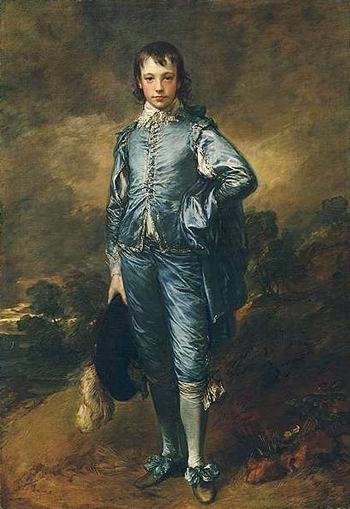
The Blue Boy

|
The painting of The Blue Boy is perhaps the most well known of Gainsborough’s works. Curiously enough it was little known in Gainsborough’s day and there is no definite information, either about the date of the painting or about the identity of the sitter.
The work was executed during his extended stay in Bath before he finally settled in 1774. It also has been suggested that The Blue Boy was exhibited at the Royal Academy in 1770.
It was not until ten years after Gainsborough’s death that the picture was mentioned in print stating that one of the artist’s best portraits was in the possession of Mr. Butall, an ironmonger in Newport and an intimate friend of the artist. It seems likely, therefore, that the model for The Blue Boy was his son, Jonathan Butall.
This portrait is extraordinary. Gainsborough depicts the boy’s face straight on, like a renaissance sculpture. His pose is far more classical than anything from the seventeenth century, a period that the artist liked very much. This is not a handsome boy but a confident, amusing young man. If you look closely, the blue paint in the costume seems to stand out but it is the silver that makes the costume. The costume dates about 140 years before the portrait was painted. This type of costume was familiar through the portraits of the great painter Van Dyck. Gainsborough greatly admired his work and seems to have conceived The Blue Boy as an act of homage to that master.
This work of art was painted with oil paints on a canvas and is quite large: 48 inches wide and 70 inches tall. Gainsborough painted it over another painting that he had already started to paint.












